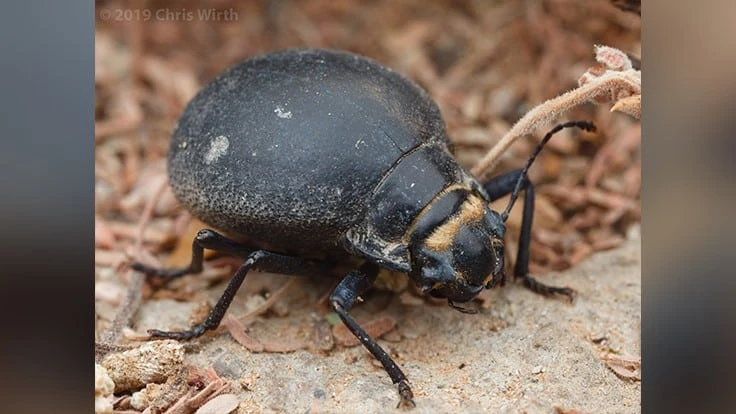
Chris Wirth
The Purdue Entomological Research Collection (PERC), housed in Smith Hall, has almost 2 million insect specimens, most of which are mounted on stainless steel pins. Pinning insects is usually easy, unless you’re Aaron Smith.
Smith, an assistant professor of entomology and director of the PERC, studies Tenebrionidae, an assemblage of more than 20,000 species known collectively as darkling beetles. Some flightless darkling beetles from deserts have exteriors so hard they can withstand the pressure of a car driving over them. Pinning them is easier said than done.
“They’re these miniature tanks, and they’re so hard you can’t push a pin through them,” Smith said. “Sometimes I have to use a small drill just to get through the cuticle.”
Last year, Purdue and University of California, Irvine, researchers used state-of-the-art microscopy and other advanced and experimental computational techniques to determine why these beetle species are so tough. Their hope is this knowledge will enable the development of super strong materials. The journal Nature published their findings.
The scientists found that the elytra, which protect the back half of the beetle, come together at a suture along the abdomen and fit together like a jigsaw puzzle, allowing the layers to flex and distribute force evenly throughout the body.
“The diabolical ironclad beetle is a great example of how nature came up with clever and efficient solutions for strength and toughness,” said Pablo Zavattieri, the Jerry M. and Lynda T. Engelhardt Professor in Civil Engineering at Purdue and a co-author of the Nature paper. “In particular, learning how the elytra and the jigsaw puzzle suture work allows us to solve some interesting problems in engineering which are related to joints between dissimilar materials, applications that can range from civil, automotive and aerospace engineering.”
CLICK HERE to read the entire article.
Source: Purdue University
Latest from Pest Control Technology
- Fleetio Launches Automotive Service Excellence Scholarship
- WorkWave Appoints John Phelan as CTO
- PMPs Use Capitol Hill Visits to Push for Preemption
- 20 Trapping Tips
- Truly Nolen Opens Two Florida Franchises
- David Cooksey PestVet of the Year, Policy Person of the Year Recognized
- Pink Pest Solutions Opens New Kansas City Office
- GA Dept. of Ag Experts Urge Reporting of Yellow-legged Hornet Embryo Nests





